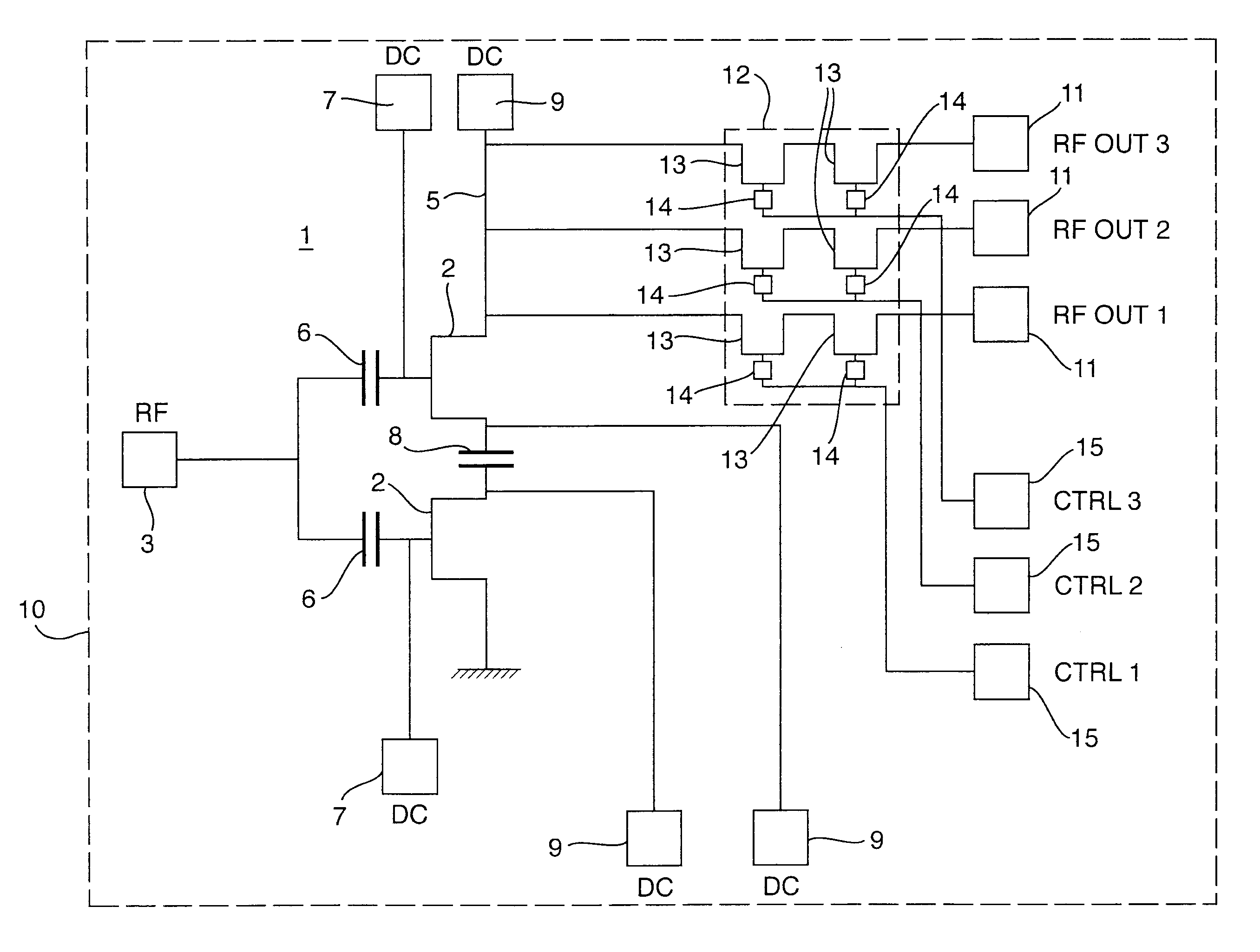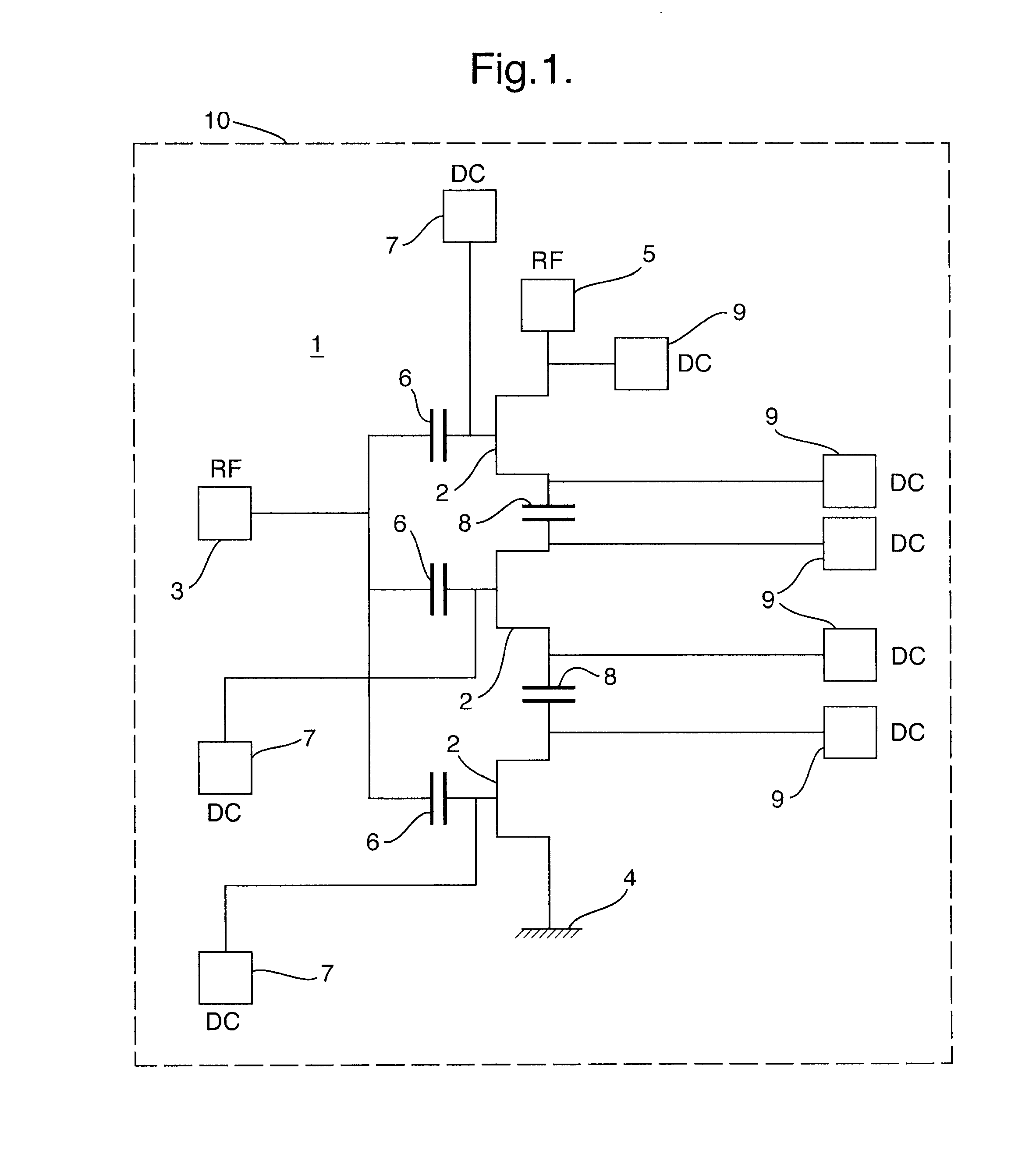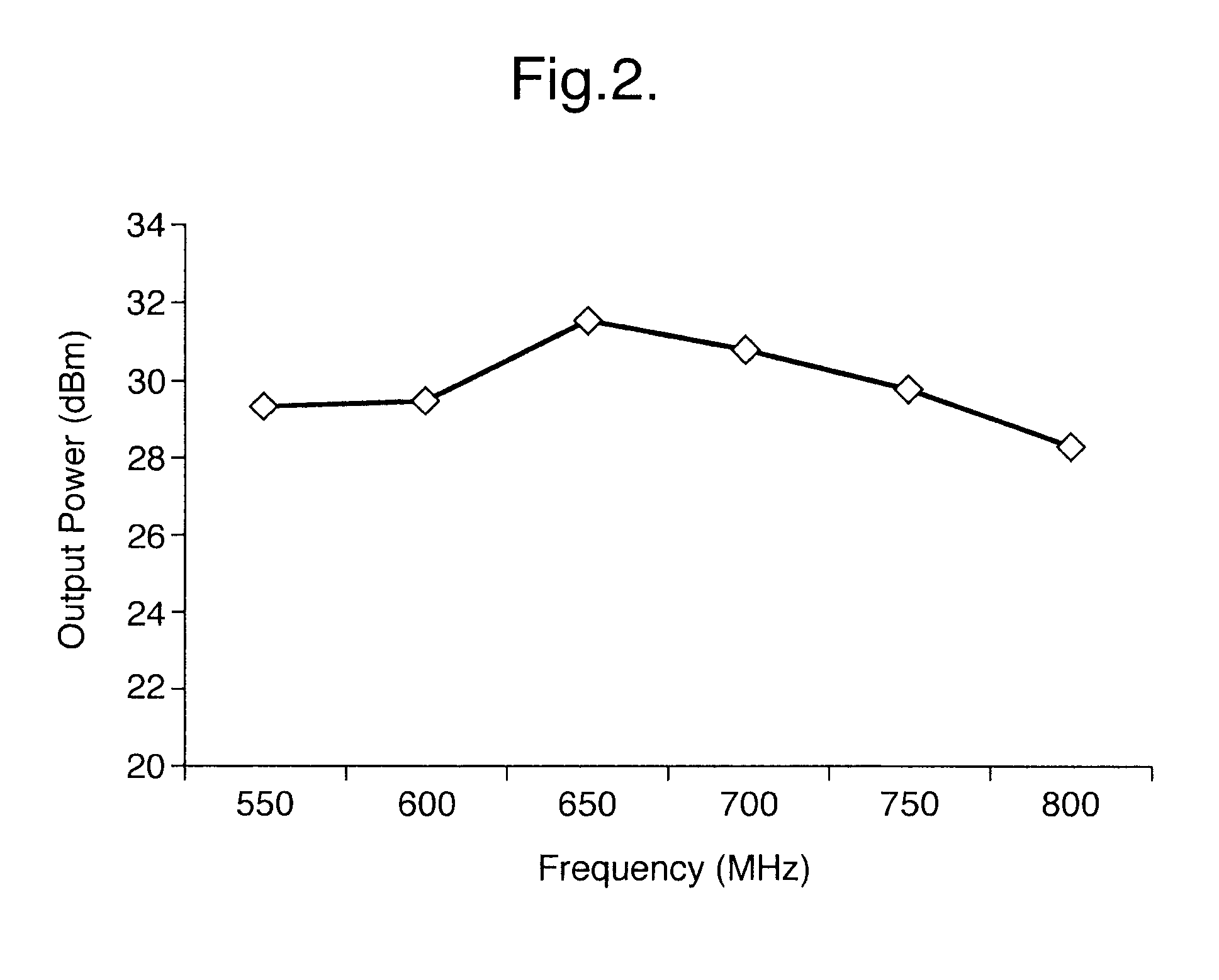Power amplifier
a power amplifier and amplifier technology, applied in the field of radio frequency (rf) transmission, can solve the problems of limiting bandwidth, reducing the efficiency of the overall system, and compromising the overall system efficiency, and achieve the effect of reducing the complexity of the circuitry and high output impedan
- Summary
- Abstract
- Description
- Claims
- Application Information
AI Technical Summary
Benefits of technology
Problems solved by technology
Method used
Image
Examples
Embodiment Construction
[0044]FIG. 1 illustrates a power amplifier 1 whose components are implemented in an integrated circuit chip 10.
[0045]The power amplifier 1 comprises a series stack of transistors 2 that constitute power amplifier devices. In the examples shown in FIG. 1, the power amplifier 1 includes three transistors 2. However, this is merely by way of example and in general the power amplifier 1 may include any plural number of transistors 2. In this example, the transistors 2 are junction pseudomorphic high electron-mobility transistors (JPHEMTs). This technology exhibits several attractive characteristics compared to alternative power amplifier devices, such as having a high Gm at turn-on and a linear Gm / bias characteristic.
[0046]The power amplifier 1 also has an amplifier input 3 for receiving a radio frequency (RF) input signal. The gates of the individual transistors 2, that act as input terminals thereof, are connected in parallel to the amplifier input 3 so that the transistors 2 each rec...
PUM
 Login to View More
Login to View More Abstract
Description
Claims
Application Information
 Login to View More
Login to View More - R&D
- Intellectual Property
- Life Sciences
- Materials
- Tech Scout
- Unparalleled Data Quality
- Higher Quality Content
- 60% Fewer Hallucinations
Browse by: Latest US Patents, China's latest patents, Technical Efficacy Thesaurus, Application Domain, Technology Topic, Popular Technical Reports.
© 2025 PatSnap. All rights reserved.Legal|Privacy policy|Modern Slavery Act Transparency Statement|Sitemap|About US| Contact US: help@patsnap.com



